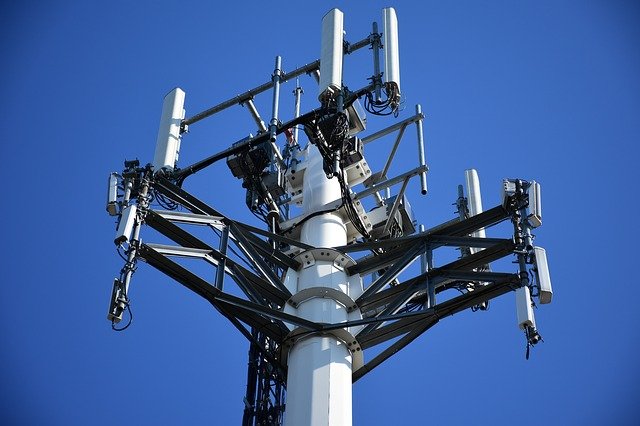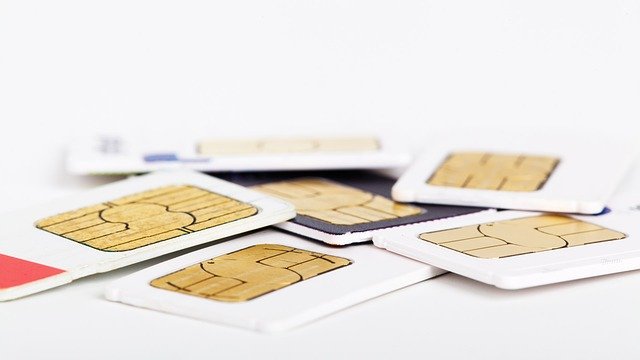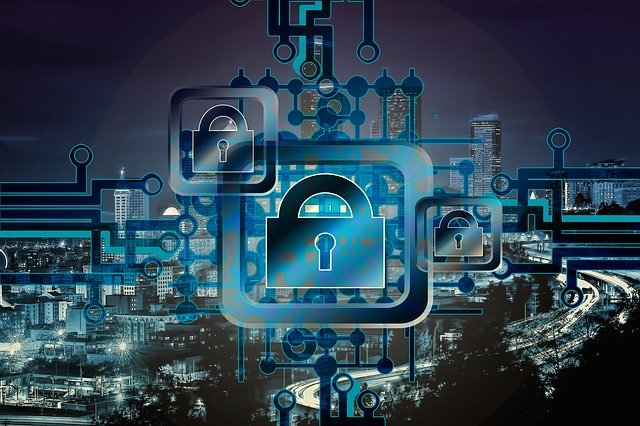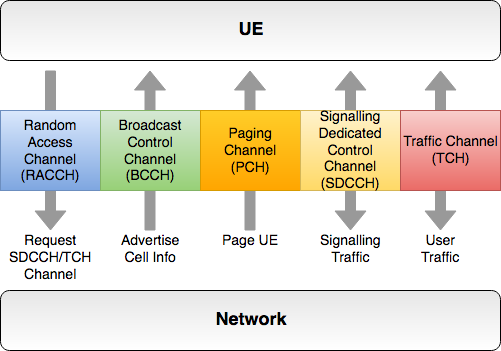Introduction to Mobile Networks
We live in times of complete communication ubiquity.
The adoption of telephones in the early 20th century and the deployment of the early phone networks marks a unique moment in history when a human voice could be carried miles away in an instant and be clearly heard by a distant listener. Suddenly physical distances had shortened somewhat and the world appeared to be a smaller place.
But while the invention of the phone was a milestone in the history of humanity, it is the development of early cellular networks in the 80s and its furious adoption in the mid-90s that resulted in a true communication revolution.
Suddenly we could contact anybody around the globe in a matter of seconds, anywhere where coverage was available. We could send short messages in an instant to other correspondents.
Shortly after slow data services became available and we could connect to the Web, read our emails, check our bank accounts, all of this using a device that fit in the palm of our hand anywhere, anytime, maybe zooming by in our train on the way to work.
Over the last three decades advances have been fast and furious. It wasn't long before data speed was sufficient for streaming music, video and low-latency gaming.
We now take for granted this device that rarely leaves us and gives access to instant communication and information at all time. We rarely think about the technology involved in providing these services and like flying, we live as if this technology had always been there.
But the truth is that mobile communications is an incredible achievement of technological miniaturization, software and hardware logic compacted into tiny handheld devices. We should marvel at the capabilities it gives us and how this would have seemed like science-fiction a few decades ago, just like the idea of flying was only the realm of dreamers not such a long time ago.
We barely think about what lies in the operator's network, how voice get carried, messages get delivered or data flows between our smartphones and the Internet.
The truth is that all this is the result of one of the greatest technological collaboration between research groups within commercial organizations. An immense complexity that required vast standardization, efficient software development and great advancements in electronics. All of it driven partly by engineering dreams and the vast financial rewards for the telecommunication industry.
I have now worked for 15 years as a software architect in the field of mobile networks and this is the first post in what will probably be a long series aiming to introduce keen readers to the little-known technological world of the cellular communications.
I will start by explaining the mechanisms of the early GSM (2G) network and how it evolved to UMTS (3G) and then EPS (4G) systems. I will also explore areas such as security, intelligent networks, legal interception, VoLTE and so on.
To start with I will explain some general concepts common to all mobile networks defined by the Third Generation Partnership Project (3gPP). The scope of 3gPP is to develop and maintain among other things the 2G, 3G, 4G and 5G networks.
Common Concepts to all 3gPP Network Generations
While mobile networks have evolve over time from second, third, fourth and now fifth generations, many core concepts have changed very little since the 1980's and will be broadly explained below to give the reader some foundations before tackling future posts.
It is a testament of the work put in early versions of the standards that so many core concepts are still valid after all this time. Mobile networks have evolved over time rather than undergoing drastic revolutions.
Mobile Network Services
Today's mobile networks provide the following key services to their subscribers:
- Messaging. Early networks could only deliver short text messages. This was later on extended to deliver images and other media. Messaging can also be used by the operator to program remotely the UICC (SIM).
- Voice calling. The capability to place calls or be called by other mobile or fixed terminal users.
- Data. The capability to exchange IP traffic between mobile devices and packet data networks such as the Internet.
- Supplementary Services. Additional non-core services such as the capability to check and top-up your credit balance.
- Mobility. Services which ensure calls and data sessions can be seamlessly handed over between cells as subscribers move from one area of coverage to the next. Also provides a way for the core network to be aware of the location of a subscriber in the network.
The Main Domains of Mobile Networks
Mobile networks can be split into several high-level functional domains:
- User Equipment (UE). Referred to in the past as mobile station, the UE can take the form of a smartphone, a cellular modem, an IoT device, etc.
- Universal Integrated Circuit Card (UICC). An integrated card capable of small information storage and specific computation. This element is familiarly referred as a SIM though we will learn the difference in future post. The UICC is key for storing subscriber specific information and authenticating with the network.
- Radio Access Network (RAN). The RAN is the part of the operator's network which is responsible for the proper radio transmission of signalling and user traffic between the UEs and the rest of the network. It consists of radio transceivers and radio controllers. Controllers and transceivers are now combined in 4G networks.
- Core Network (CN). The core network provides all of the services listed above. The core network interconnects the operator's network with other networks such as fixed telephone networks and packet data networks (e.g. Internet).
- Billing Domain. Responsible for keeping track of service usage, related billing information and ensures that subscribers are given service that does not exceed their data plans.
Subscriber Identification
Each subscriber in mobile networks is uniquely identified by an International Mobile Subscriber Identity (IMSI) which is stored in the core network and the SIM. The IMSI consists of 15 decimal digits which always start with the Mobile Country Code (MCC) and Mobile Network Code (MNC) of the home operator.An example IMSI could be:
272011234567890
Where 272 is the MCC for Ireland, and 01 is the MNC for Vodafone.
We can thus tell that this IMSI represents a customer of Vodafone Ireland.
Security in 3gPP Mobile Networks
3gPP standards define how signalling and user traffic can be exchanged securely between UEs and the core network. The security mechanisms defined in 3gPP provides the following:
- Authenticate subscribers to the network
- Authenticate the network to subscribers
- Prevent authentication replay attacks
- Encrypt all traffic exchanged over insecure links
- Integrity check all packets exchanged over insecure links
Control Plane and User Plane
All the traffic exchanged between the UEs and the network can be grouped in two categories:
- Signalling traffic - This traffic is exchanged in order to fulfill all the functions provided to the subscriber. For example, certain messages need to be exchanged between the UE and the network when a call is placed by the subscriber before audio can be exchanged between the caller and the called parties. Signalling traffic flows through what is abstractly called the control plane. Note that in general signalling traffic has to be transmitted reliably between network elements.
- User Traffic - This is the application traffic that is actively used by the user of a UE. User traffic includes voice audio, IP traffic exchanged with packet data networks, etc. User traffic flows through what is abstractly called the user plane.
It should be noted that in mobile networks the control plane and the user plane are treated separately. In practice, for example, this means that signalling traffic and user traffic exchanged with a given UE may flow through different network nodes and be subject to different Quality of Service (QoS).
Radio Logical Channels
While the radio technologies used in 2G, 3G, 4G and 5G differ all generations divide the radio resources available within a cell into a set of logical channels which allow traffic to flow in certain directions and are used for specific purposes.
The following direction terminology is commonly used:
- Uplink - UE to network direction
- Downlink - Network to UE direction
The table below gives an overview of the different types of logical channels in use in all mobile networks.
| Channel Type | Traffic Direction | Purpose |
|---|---|---|
| Random Access Control Channel | Uplink | Common channel used by all UEs within a cell to request assignment of a traffic or signalling channel |
| Broadcast Control Channel | Downlink | Used by a cell to advertise common information about the cell to all attached UEs. Information include things such as cell identity, operator's PLMN ID, neighbor cell information, etc. |
| Paging Channel | Downlink | Used by the network to notify UEs that are in IDLE mode that signalling or user traffic is pending for them from the network |
| Signalling Dedicated Control Channel | Bidirectional | Assigned by the radio controller to a single UE to exchange signalling traffic |
| Traffic Channel | Bidirectional | Used to exchange user traffic with a UE |
What Next?
This post is a brief introduction to mobile networks. Its aim is to give the reader a flavor of what the next posts will be about.
My next post will expand on the architecture of early GSM (2G) networks.
Acronyms and Concepts
| Acronym | Meaning | Description |
|---|---|---|
| 3gPP | Third Generation Partnership Project | Alliance of commercial and non-commercial organizations in charge of defining the standards of 2G, 3G, 4G and 5G networks |
| CN | Core Network | Part of the mobile network responsible for providing core services to the UEs (does not include radio resource management) |
| IMSI | International Mobile Subscriber Identity | 15 digits number uniquely identifying a mobile network subscriber across all providers |
| MCC | Mobile Country Code | 3 digit value identifying a country |
| MNC | Mobile Network Code | 2 or 3 digit value identifying a mobile operator within a country |
| QoS | Quality of Service | Traffic characteristics provided to a given traffic flow (e.g. priority, latency, bit rate, etc) |
| RAN | Radio Access Network | The part of the mobile operator's network in charge of transferring signalling and user traffic with the UE using radio transmission |
| UE | User Equipment | Terminal used by the subscriber to access the mobile network, such as smartphone, modem, IoT device, etc. |
| UICC | Universal Integrated Circuit Card | Commonly known as SIM card. Stores subscriber information such as IMSI and shared key and capable of specific computing |
| Concept | Description |
|---|---|
| Control Plane | Abstract medium through which signalling traffic flows |
| User Plane | Abstract medium through which user traffic flows |
Please do not hesitate to leave comments with your questions and I will make sure to reply with the best possible answers.








Congratulations! This post has been upvoted from the communal account, @minnowsupport, by irelandscape from the Minnow Support Project. It's a witness project run by aggroed, ausbitbank, teamsteem, theprophet0, someguy123, neoxian, followbtcnews, and netuoso. The goal is to help Steemit grow by supporting Minnows. Please find us at the Peace, Abundance, and Liberty Network (PALnet) Discord Channel. It's a completely public and open space to all members of the Steemit community who voluntarily choose to be there.
If you would like to delegate to the Minnow Support Project you can do so by clicking on the following links: 50SP, 100SP, 250SP, 500SP, 1000SP, 5000SP.
Be sure to leave at least 50SP undelegated on your account.
Hi all! Comparing plans from different wireless carriers can help determine the best option that strikes a balance between reasonable prices and the services you want. One of the best companies that provides affordable plans is Boost Mobile. Despite the fact that their prices are quite low, the quality of their services is very high, and if even small problems arise with them, you can call the boost mobile customer service number and all problems will be solved very quickly by their qualified employees.